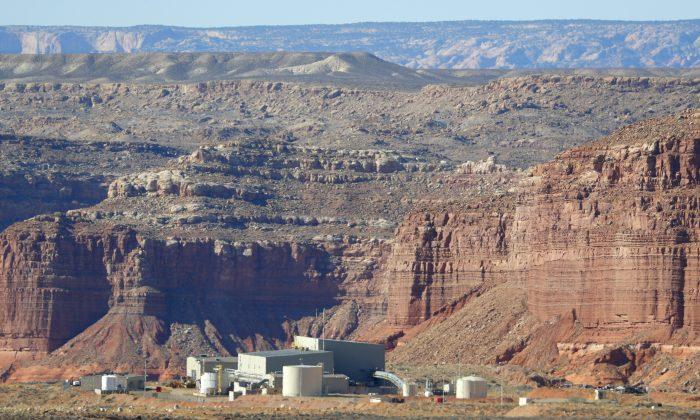News Analysis
Nuclear power generation provides about 11 percent of the world’s electricity from approximately 450 nuclear reactors. The United States is far and away the world’s largest producer of nuclear power, accounting for more than 30 percent of worldwide nuclear generation of electricity.
The United States has 99 nuclear reactors, which produced 805 billion kilowatt hours (kWh) in 2017, accounting for approximately 20 percent of our electricity needs and providing approximately 60 percent of our carbon-free electrical generation. France is a distant number two in overall generation of nuclear power at approximately 384 billion kWh. However, France generates over 70 percent of its internal electricity needs from nuclear power. China is number three, generating a bit more 210 billion kWh. Russia is fourth with roughly 180 billion kWh.
The United States used to be the world’s leader in the design and construction of nuclear reactors. No longer. The U.S. nuclear industry has been dramatically reshaped by the rise of state-owned competition from Russia, China, and Korea coupled with a dearth of domestic investment.
China and Russia are aggressively moving to expand their nuclear industries. Both countries are building and commercializing new reactors for domestic and international markets as they pursue the development of complete fuel cycles.
Russia, through its state-owned company, Rosatom, is building seven new reactors domestically and reports to have $133 billion in foreign orders. China has brought more than 20 reactors online and today has 19 additional plants under construction. Nearly two-thirds of the new reactors under construction worldwide are using designs from Chinese and Russian state-owned companies.
The outlook for the United States’ nuclear industry is markedly different. In the last five years, six units that produced 4,100 megawatts of power have closed. Nuclear plant operators have announced the scheduled closure of an additional eight units, which provide another 7,100 megawatts of capacity. Based on current developments, it is expected that the share of nuclear-generated power may fall 3-4 percent over the next decade to around 16-17 percent of the U.S. electricity supply.
The United States has also experienced a significant underlying nuclear fuel supply chain erosion in recent years. The ability of the United States to produce our own nuclear fuel has been severely reduced, leaving our nation heavily reliant on foreign sources of supply. Our domestic production capabilities have been severely eroded at each point in the nuclear fuel production cycle.
The United States is the largest buyer of uranium globally, however, U.S. produced uranium represents less than 5 percent of the uranium (U308) sold domestically. Uranium is generally found as an oxide. U308, also known as Triuranium octoxide or “yellow cake,” is the most stable form of uranium oxide and is the form most commonly found in nature.
Uranium mining has declined in America by 90 percent since 1980. Recent declines have been equally severe. In 2014, our domestic production amounted to 4.9 million pounds of uranium. In 2017, total domestic production had fallen to 1.2 million pounds—a 75 percent reduction.
Today, the vast bulk of the uranium used by domestic nuclear reactors comes from foreign sources. In 2017, U.S. civilian nuclear power reactors purchased a total of 43 million pounds of U308 equivalent. Of this total, 40.1 million pounds or 93 percent came from foreign suppliers.
Uranium mining production is highly concentrated with 71 percent of 2017 worldwide production coming from just three countries: Kazakhstan (39 percent), Canada (22 percent), and Australia (10 percent).
Production and marketing of uranium is dominated by four companies: Kazatomprom (21 percent), Cameco (17 percent), Orano—previously Areva (13 percent), and Rosatom through its mining division, ARMZ, which now owns former Canadian company Uranium One (13 percent).
The United States now imports approximately 40 percent of its uranium directly from Russia and Russian satellites (primarily Kazakhstan). China is also becoming a significant player and has specifically targeted our market. Many of the largest suppliers of uranium, such as Kazatomprom, Rosatom, and the China National Nuclear Corporation, effectively operate as arms of their respective governments.
Our ability to convert uranium into uranium hexafluoride, the second step in producing nuclear fuel, is now essentially gone. The United States watched its last remaining uranium conversion facility shut down in November of 2017 when Honeywell announced plans to suspend production at its Metropolis plant. That shutdown could be reversed but it remains unclear when or if that will happen.
The third step in nuclear fuel production, enrichment of uranium, is the most technically challenging part of the overall process. Here too, we no longer have domestic capabilities, as the last U.S.-owned enrichment facility closed in 2013. The United States has one foreign-owned enrichment facility, Urenco, located in New Mexico, that produces approximately one-third of our commercial demand through advanced centrifuge technology. Urenco is one-third owned by the United Kingdom, one-third by the Dutch government, and one-third by German utilities. Russia, now the largest producer of enriched uranium, accounted for over 40 percent of our enriched uranium imports in 2017.
The final step in the nuclear fuel process is the fabrication of enriched uranium into nuclear fuel rods. Westinghouse, owned by Toshiba and the largest domestic producer of fuel rods, filed for bankruptcy in March 2017. Brookfield Asset Management of Canada recently announced the acquisition of Westinghouse as part of its re-emergence from bankruptcy. The production outlook remains unclear.
Nuclear power provides almost 20 percent of our nation’s electricity and is vital to our electrical system. Nuclear plants run 24 hours a day, 7 days a week, and produce electricity with unmatched reliability. The loss of our internal fuel production cycle and increased reliance on Russia as a supplier at all levels of our nuclear fuel supply chain should be of material concern.
As a prime example, following the issuance of sanctions against 24 Russian businessmen and government officials, Russia recently threatened to halt the export of enriched uranium to the United States. The threat was ultimately not carried out, but the impact on our domestic supply chain would have proven material.
On Jan. 16, 2018, Energy Fuels and Ur-Energy jointly submitted a Petition to the U.S. Department of Commerce for Relief Under Section 232. Ur-Energy and Energy Fuels are the two main U.S. uranium producers, together supplying more than half of all U.S. uranium in 2017. Their petition noted many of the same concerns highlighted here:
Imports of uranium from state-owned and state-subsidized enterprises in Russia, Kazakhstan, and Uzbekistan now fulfill nearly 40 percent of U.S. demand, while domestic production fulfills less than 5 percent.
Increasing levels of nuclear fuel are expected to be imported from Russia and China in the coming years, which will compete directly with U.S. uranium production.
In 2017, U.S. uranium production fell to near historic lows due in large part to uranium and nuclear fuel imported from state-subsidized foreign entities; 2018 domestic production is likely to be even lower.
Russia and China are both pursuing the use of nuclear-power financing and technology as a means of expanding their overseas presence and influence. At the same time, both countries are actively pursuing control of the global supply chain for nuclear fuel used in power production.
Given the strategic importance of our domestic nuclear power industry, a refocus on our nuclear power industry and internal uranium supply chain appears overdue.
Jeff Carlson is a CFA® Charterholder. He worked for 20 years as an analyst and portfolio manager in the high-yield bond market. He runs the website TheMarketsWork.com
Views expressed in this article are opinions of the author and do not necessarily reflect the views of The Epoch Times.






Friends Read Free